Divergence Trading Strategy: 5 Rules to Enhance Your Trades
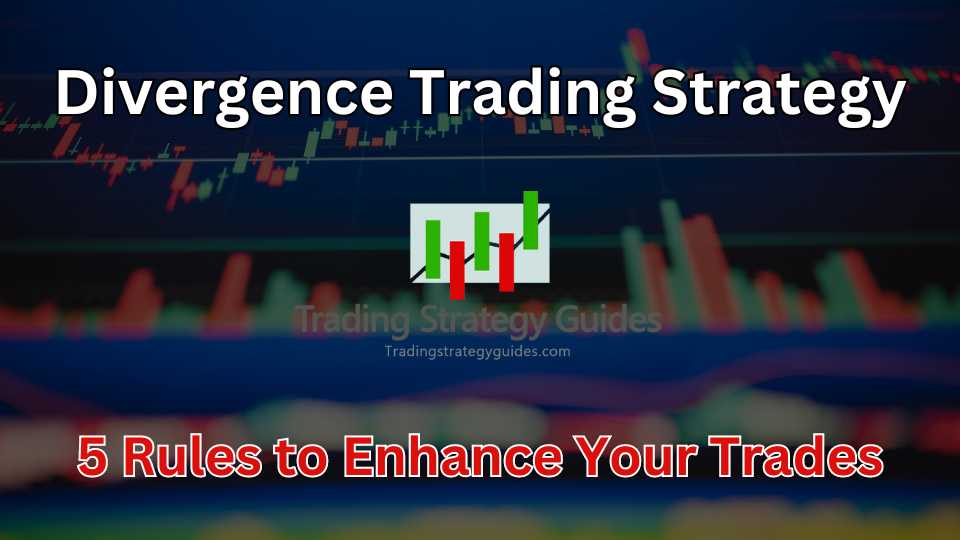
Learn the Divergence Trading Strategy before you try picking a trend reversal. This trading guide will teach you the basic skills to find mismatches between the price action and the best divergence indicator. As a bonus, you’ll get the five rules of trading divergence and convergence in any market.
We discussed the advantages of using the Awesome Oscillator in your trading and explained how you can use the tool with your Divergence Trading Strategy.

Thanks for visiting Trading Strategy Guides (TSG)!
You have discovered the most extensive library of trading content on the internet. Our aim is to provide the best educational content to traders of all stages.
Learn Our Trading Best Strategy By our Founder Casey Stubbs
In other words, we want to make YOU a consistent and profitable trader.
If you’re a brand new trader, we recommend hopping over to our ultimate beginner’s guide to trading to learn more.
One of the advantages of the indicator is its usage in determining divergence and convergence. However, considering the importance of divergence and convergence, the topic should be expanded into a full-scale article. We will thoroughly explain the power of divergence.
Before diving into the Divergence Trading Strategy, let us explain what the terms mean.
Table of Contents
Divergence Trading Strategy: What Are Divergence and Convergence?
The definition of convergence is to come together. For example, the lines converge at this point.
To diverge means to move or draw apart. When a currency pair converges, it means that price and momentum are in sync. The price is also moving at a sustainable pace. When a currency pair is diverging, it means that the price and momentum are not in sync with each other.
The action moves at a less stable/sustainable pace, and the likelihood of a correction or reversal increases. Moreover, the divergence-convergence analysis measures the power a currency has at one point in time with another point in time.
Then, it compares the two with each other. The analyst can then judge whether the currency shows signs of strength or weakness.
Why Are Divergence and Convergence Trading Important?
The convergence and divergence tool is a very powerful method. One of the main benefits of this analysis is that it is not lagging. Similar to price action, convergence and divergence analysis are very useful in predicting future price behavior based on current values.
This is the opposite of lagging indicators. By definition, they are always following price action in their development.
Divergence is an event that is associated with increased levels of volatility. An asset’s value can only diverge so much before it experiences a major price swing and adjusts back to what the market believes it “should” be worth. Increased volatility creates more profitable trading opportunities over the course of a given trading period.
By paying attention to instances of strong convergence and strong divergence, you can capture unique trading opportunities that you may not have noticed before.
Price action always gives the most up-to-date information. The interpretation of price is an art and not an easy task. Adding a method to support one’s strategy and an analysis with more predictive value could be very useful.
What Do Divergence and Convergence Look like on a Chart?
Using the Moving Average Convergence Divergence Indicator (MACD) is a good place for you to begin your analysis. Like the Awesome Oscillator mentioned above, the MACD focuses on using averages from multiple different time periods.
Unlike the AO, the MACD uses closing prices and exponential moving averages. These averages have been adjusted to emphasize the importance of more recent trends. The time frames used by the MACD indicator include 9 periods, 12 periods, and 26 periods.
At its core, divergence trading has one crucial and vital rule. If the price makes a higher high, the oscillator should also be making a higher high. On the other hand, if the price makes a lower low, the oscillator should also be making a lower low.
This statement could be printed out and taped above your computer. In cases this does not happen, something “fishy” is happening. The analyst may look for more clues to determine the currency pair’s behavior and diagnosis.
Divergence-convergence can only be evaluated when the price has either formed:
- A higher high than the previous high
- A lower low than the previous low
- Double top
- Double bottom
The MACD and Awesome Oscillator (AO) are the best indicators to measure such a move, and RSI, the relative strength index, is another method.
I myself prefer using the AO. A proper divergence is only present when the histograms indicating momentum have retraced back to the zero line.
Two subsequent lows or highs where the histograms have not returned to the zero line are improper divergences. These are sometimes called bad divergences. Often enough, if a trader zooms in on the 1-time frame, a proper divergence will become noticeable there.

How to Use Regular Divergence – Convergence
When running a convergence-divergence analysis, paying attention to how price turning points are relatively changing over time is essential. Are the high points for these prices increasing or decreasing as time passes? What about the low points? Understanding the critical relationship that exists between these turning points can help you become a much more effective trader.
A regular divergence is used as a possible sign of a trend pause or trend reversal, and a regular bullish divergence occurs when the price is making lower lows (LL).
However, the oscillator is making higher lows (HL). Usually, this happens at the end of a downtrend. Price and momentum are expected to move in line with each other. If the price makes a new low, but the oscillator fails to make such a new low itself, the price will likely retrace or reverse.
The opposite is true for regular bearish divergence. This happens when the price makes a higher high (HH), but the oscillator makes a lower high (LH). Such divergence can be found in an uptrend. When this divergence occurs, the price will most likely retrace or reverse.
Divergence and convergence can be used in multiple ways, such as:
- When the currency is converging, the likelihood of trend continuation is high. The trend reversal is unlikely (this guideline is somewhat less reliable on lower time frames).
- When the currency is diverging, the likelihood of trend continuation is decreasing. This means that trend reversal is possible.
- When the currency has double or triple divergence, the likelihood of trend continuation is unlikely. A trend reversal is a decent probability.
The oscillators indicate to us that momentum is possibly shifting. Even though the price has made a new peak or bottom, the chances of the momentum being sustained and continued are decreasing. Regular divergence is helpful for cautiously predicting the end of a trend.
Only in some cases will the currency pair totally reverse for a trend in the opposite direction. May I emphasize the word cautious in the previous sentence? It is a tricky trading element to master. Adding other methods of confirming a trend is potentially ending is always beneficial.
In the meantime, feel free to read about trader’s tech and installing MT4 EAs with indicators.
Other Methods of Confirming Divergence
One method of analyzing divergence from a different perspective is using trend lines and channels. Once divergence occurs in the market, the single-line trend lines can identify when a trend is ending. It may signal the end of a trend. Waiting for that break could be one way of trading divergence.
Similar trend lines can also be used on the momentum indicators themselves (e.g., using the same spots in time as on price action). The momentum trend lines will be helpful in identifying and spotting reversals and trend breaks.
Another critical point is managing expectations with regard to divergence. There is a substantial difference between the pip size of a reversal and a retracement. Be careful to reckon and plan on both in your trading plan.
One way of distinguishing between the two is by looking at the time frame. Suppose a trader is observing a 15-minute or 1-hour divergence. In that case, the divergence will most likely create a pause or retrace within a bigger trend continuation.
If a higher time frame has divergence, the likelihood of a trend reversal is higher. Basically, the higher the time frame, the more powerful it is, as you can see in this example of the EUR/USD.
Also, the likelihood of a trend reversal increases if double or even triple divergence is spotted. In Elliott Waves’ terms, this is explained by the divergence between Wave Three and Five of a bigger Wave Three. Then, there is a divergence between bigger Waves Three and Five.
A trader can also decrease the risk of divergence trading by only trading divergences when they occur in multiple time frames. The likelihood of a bounce increases when more time frames show diverging movements between price and momentum.
How to Use Hidden Divergence
While regular divergence is especially useful for cautiously predicting the end of a trend, hidden divergence can be a good indication of trend continuation.
A hidden bullish divergence occurs when the price makes a higher low (HL). However, the oscillator is showing a lower low (LL). In an uptrend, hidden divergence happens when the price makes a higher low, but the oscillator makes a lower low.
Furthermore, a hidden bearish divergence occurs when the price makes a lower high (LH), but the oscillator makes a higher high (HH). In a downtrend, hidden divergence happens when the price makes a lower high, but the oscillator makes a higher high.

Now, do you want to start trading divergence and convergence, but you have no idea where to start? Don’t worry. We’ve got your back!
Learn them, and make sure you use them next time you try trading divergence convergence. Ignore them and watch how hard trading can be all of a sudden.
How to Trade the Divergence Strategy – the 5 Golden Rules
Before you start trading Divergence Trading Strategy, make sure you go through these five golden trading rules:
- Divergence can only show up in four different price scenarios.
- For bearish divergence, the swing high prices typically correspond to an indicator’s high point.
- For bullish divergence, the swing low prices typically correspond to an indicator’s low point.
- The slope or the angle of the line connecting the highs and lows tells us how strong the divergence actually is.
- Never chase divergence if the price action played out.
Let’s go through each of these Divergence Trading Strategy rules one by one.
Rule #1: It Only Exists in Four Different Price Scenarios
Divergence can only be displayed on the price chart if the price forms a double top or double bottom, a higher high than the previous high, or a lower low than the previous low.
If you’re not able to see these price actions playing out, forget about checking your indicator. Why? Well, that’s simply because it’s impossible for the divergence to play out otherwise.
Here’s an example of what I mean:
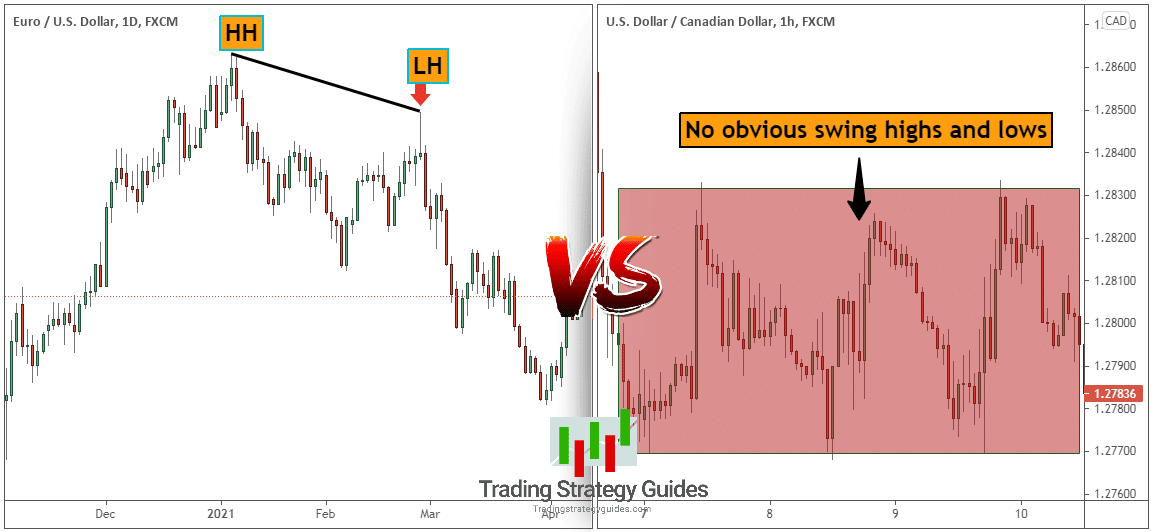
Now, let’s move on with the second rule.
Rule #2: For Bearish Divergence, Only Connect Highs
This second step is straightforward. We draw a line between two highs if you’re looking at bearish divergence. The rule is that you must draw a line between two highs on the indicator as well.
Don’t make the mistake of using price highs and then, on the indicator, connect low points. They have to match.
The swing high must correspond to an equivalent high on the indicator. Simply draw an imaginary vertical line from the price to the indicator to spot the corresponding high points rapidly.
Here is a bearish divergence example:
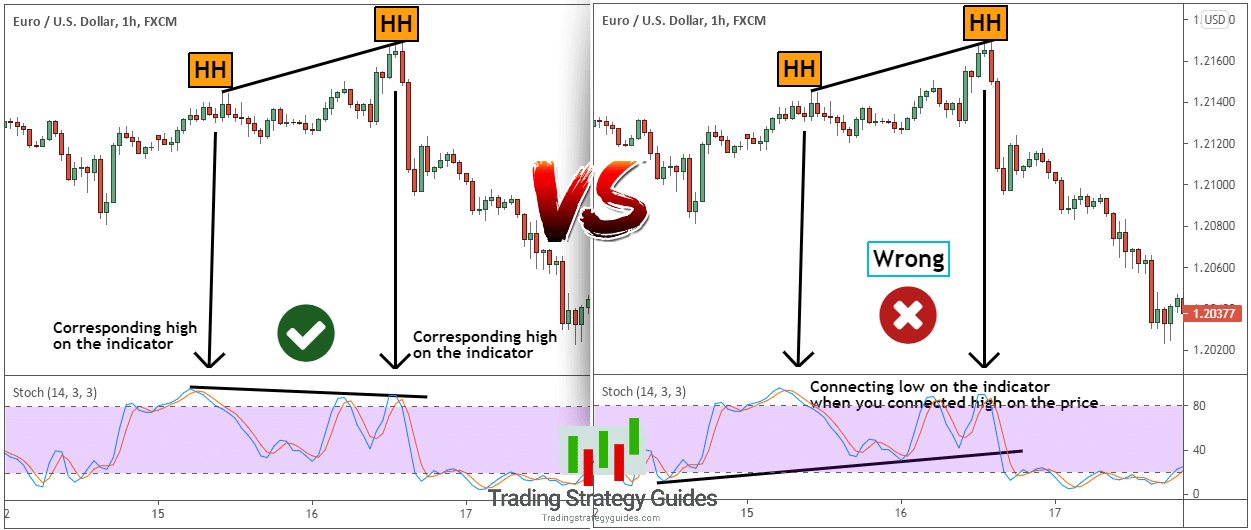
The same rules are applied to the bullish divergence but in reverse.
Rule #3: For Bullish Divergence, Only Connect Lows
For bullish divergence, we look to connect lows on the price action and lows on the indicator as well. The lows on the price chart must vertically line up with the lows on the technical indicator.
Here is what I mean:
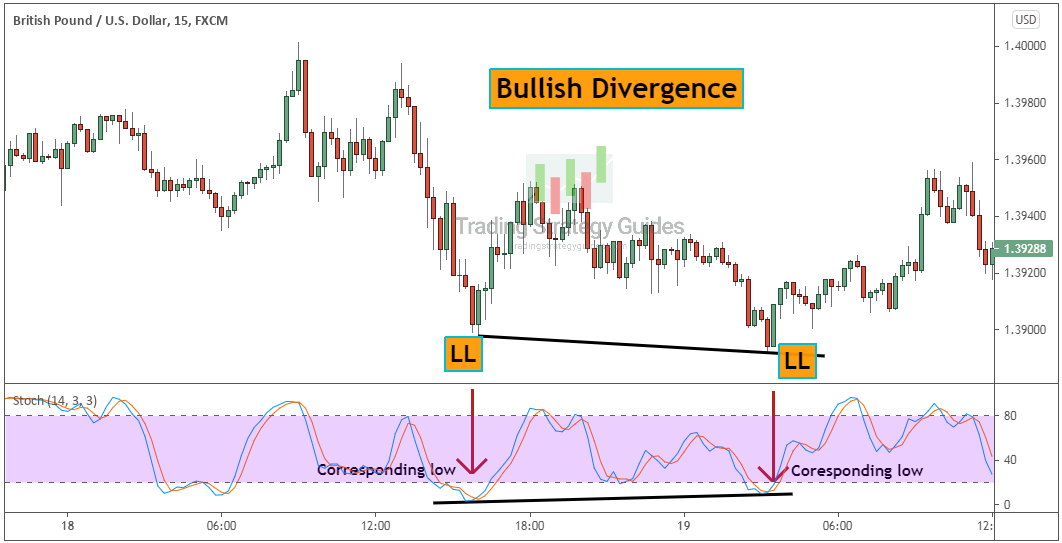
Now, the next rule has to do with the line slope.
Rule #4: The Line Slope Hints to the Strength of the Divergence
Divergence can only exist if we have an ascending or descending slope on the price action or the indicator itself.
However, here is a secret that no one tells you: The bigger the divergence slope, the higher the chances of a price reversal. Not only that, but the profit potential also increases exponentially.
Don’t believe us? Here is a comparison of two regular divergences with different slopes:
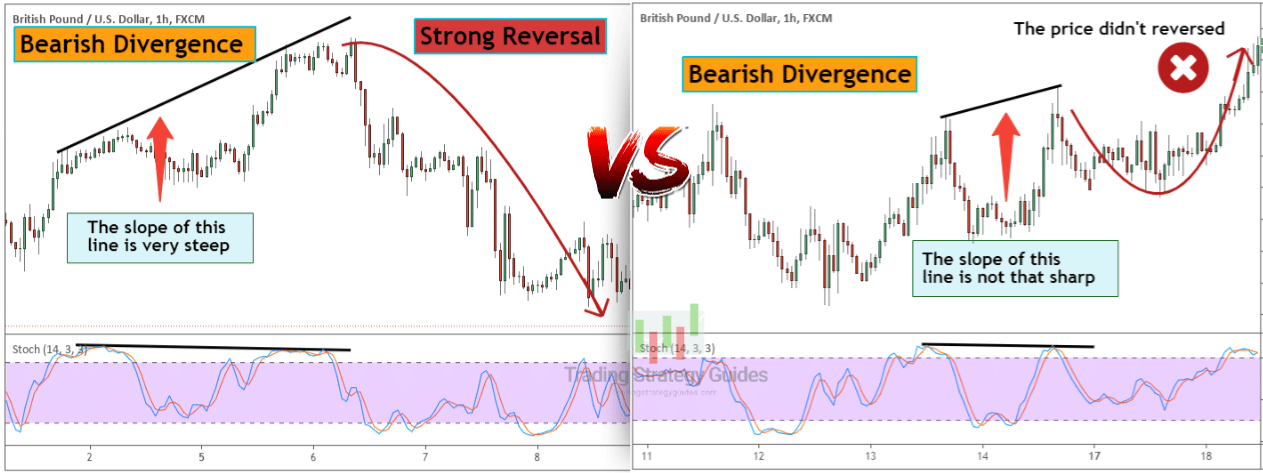
The key takeaway is that you can put more weight on the regular divergences that have steep slopes.
Next, another pro tip is never to chase a divergence.
Rule #5: Don’t Chase Divergence
If the divergence has run its course, it means that you’re already too late to the party.
The smart way to trade divergence is as soon as it happens. Once the price has started reversing and it’s at a good distance, far away from its recent swing high (low), it’s better to wait for another divergence signal to show up.
We know it always looks tempting to chase a market, but keep in mind that it is a loser’s game.
Moving on, we have another surprise for you.
Your Cheat Sheet on the Divergence Trading Strategy
We’ve created a quick cheat sheet to help you trade bullish and bearish divergences and hidden divergences. Make sure to memorize it, save it on your desktop, and use it whenever you feel confused about the price action. See below the ultimate divergence cheat sheet.
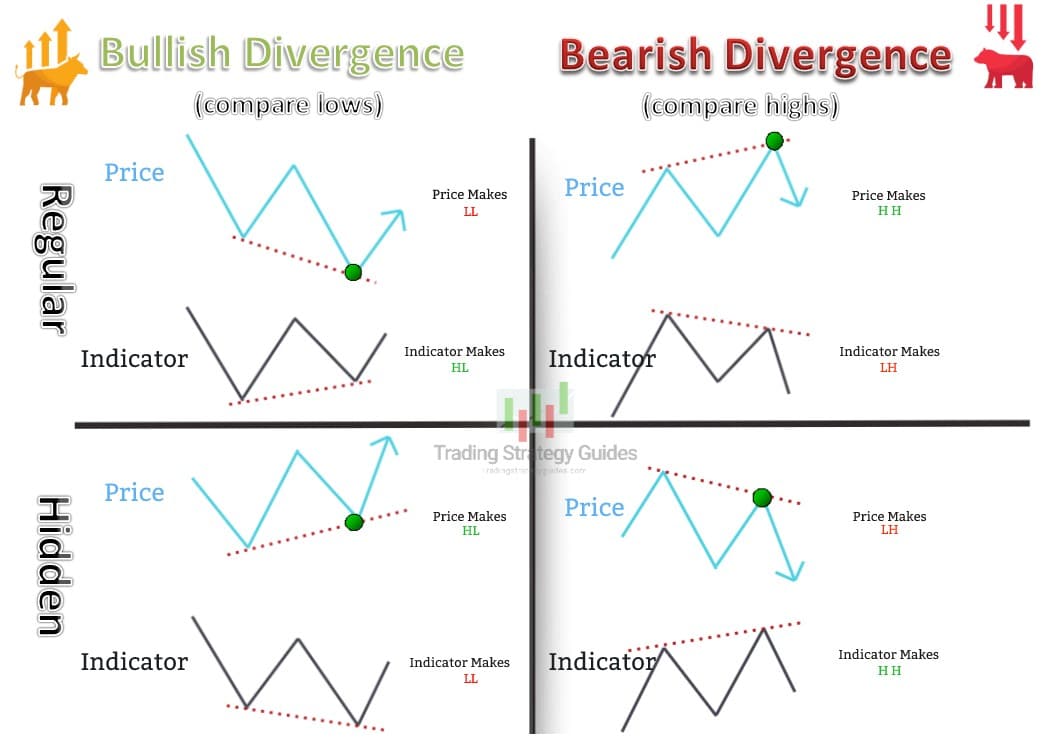
Final Thoughts about Trading the Best Divergence Indicator
Like all trading strategies, remember that using convergence-divergence indicators requires a certain degree of risk. Whether you are using the Awesome Indicator, MACD, Relative Strength Index, or any other, you will need to carefully protect yourself from the risks of speculation.
By keeping the Divergence Trading Strategy, you can increase your winning percentage and practice unique trading opportunities.
Please be careful when implementing this Divergence Trading Strategy. Make sure to do proper backtesting and incorporate other tools and time frames to confirm the divergence and convergence readings.
Before I wish you a good weekend, I am giving you a must-read article about the best average true range in Forex – enjoy! Have a great week and happy trading!
Thank you for reading!
Please leave a comment below if you have any questions about the power of divergence!


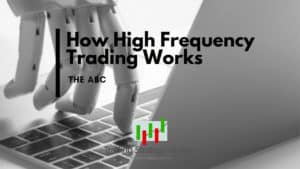




Good morning i want ask about the power of Divergence or hidden divergence. Do you have the book available. Im too interested on learning Divergence,hidden,regular with awesome indicator. please help.
The book of the power of Divergence if there is a book or video.Please i want it. Thanks
shalom, noteworthy blog on unctuous loss. equivalent helped.
it is always a good idea to go green because we always want to help the environment..